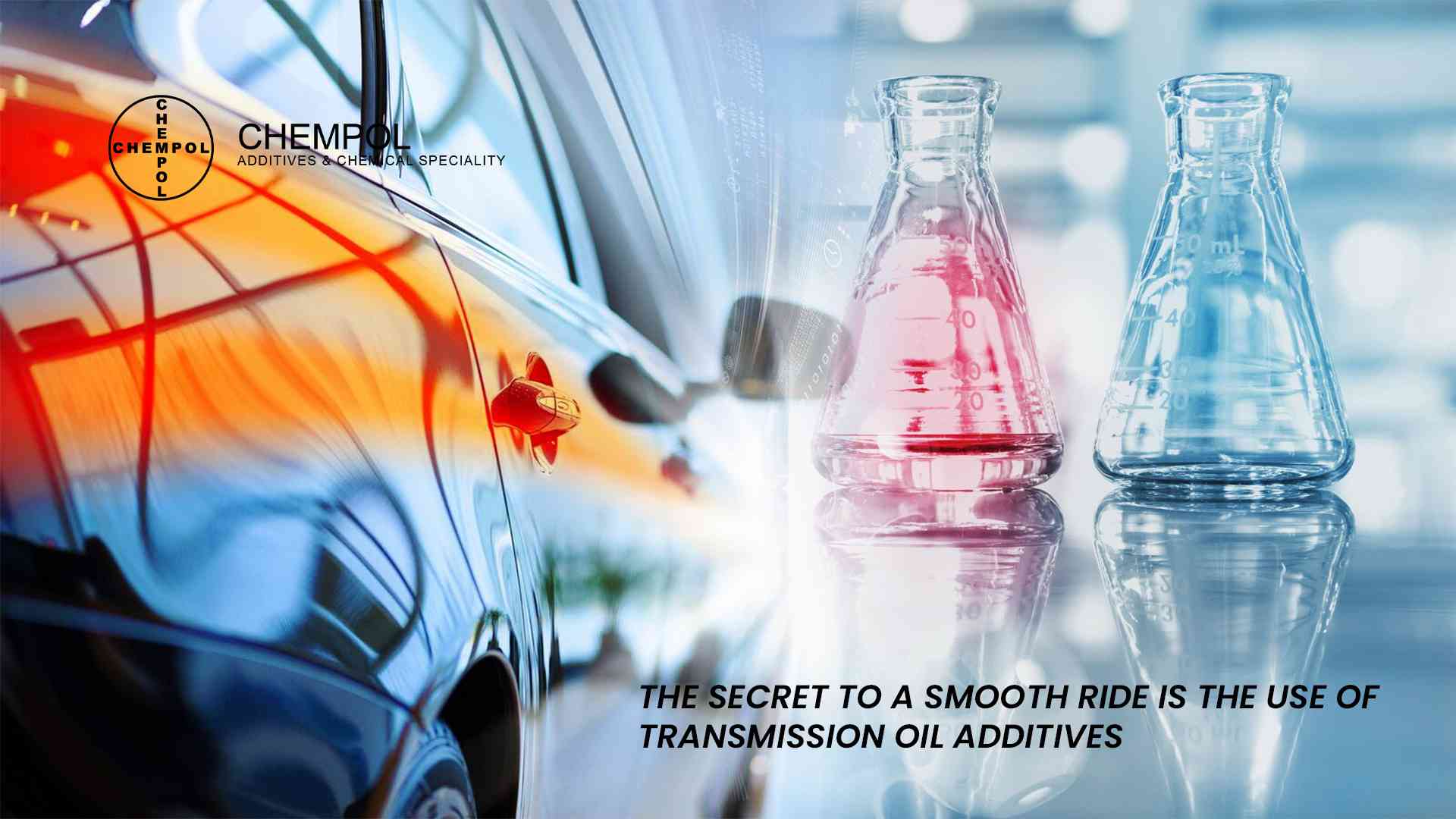
The Secret to a Smooth Ride Is The Use of Transmission Oil Additives
As car owners, we do our best to maintain cars and have a smooth ride. Well, it’s very much like a good cup of coffee to start your day. Thus, your car needs fluid, but that’s not enough for your vehicle to run extremely smoothly. Your transmission fluids need additives that keep them running even in extreme weather.
Many workshops and automotive dealers suggest the use of additives with changing transmission oils.
You know how we all love that feeling of a smooth ride, right? Well, just like you need a good cup of coffee to kickstart your day, your car needs its transmission fluid in tip-top shape to keep it running like a dream.
The Transmission Oil with Quality Additives
Now, you might be thinking, What’s the big deal with transmission fluid anyway? Here is the answer. These specialty chemicals are the lifeblood of your car’s gear. Without it, you’re looking at a rocky road ahead. This also saves you from regular oil changes, which are like heavy costs for your car. The additives keep everything flexible, and shifting gears becomes easy.
The Heavy Cost of Neglecting The Additives
Ignoring your transmission fluid is like skipping breakfast: it seems fine until you’re hungry and out of energy. Over time, old transmission fluid turns into the Grinch, stealing smooth shifts and leaving wear and tear in its wake. It’s like running in old, worn-out sneakers; you can do it, but it’s not doing you any favors.
The Magic Potion of Additives
Chempol has a magic potion for your car’s transmission. These nifty additives are like vitamins for your vehicle. They’re the fairy godparents of the transmission of the world, swooping in to keep things running as smooth as butter on a hot skillet. They boost lubrication, kick dirt to the curb, and keep those seals fresh.
Picking Your Potion
But hold your horses – there’s a whole lot of these additives out there. Choosing one can feel like trying to pick a favorite movie. Don’t worry; we’ll guide you through the maze and help you pick the champion for your chariot. We have multiple additives that suit your needs and keep you from any hassle.
Understanding Oil Additives
Engine oils are typically categorized into three distinct types: regular mineral oil, semi-synthetic oil, and fully synthetic oil. It is imperative to recognize that regular mineral oil is devoid of additives, while semi-synthetic and fully synthetic oils incorporate engineered additives for superior performance.
The Functionality of Additives
The primary function of transmission fluid additives in semi-synthetic and fully synthetic oils is to facilitate enhanced lubrication and to provide a shield against friction and corrosion—two prevalent adversaries of engine components. These additives are meticulously formulated to extend the life of the engine oil, thereby ensuring the longevity and reliability of the engine’s operation.
The Advantages of Synthetic Oils
In comparison to mineral oils, synthetic oils, owing to their additive content, are capable of maintaining their integrity and lubricating properties for distances up to 10,000 kilometers—doubling the effective lifespan of their mineral counterparts. This prolongation of service intervals contributes to a reduction in maintenance costs and enhances the overall cost-efficiency of vehicle operation.
Best Engine Protection Strategies
The addition of additives in engine oil for the treatment during changes is advisable. It provides additional protection to the transmission directly and to the engine indirectly. This treatment works to fortify the engine’s resilience against wear and tear. Thus, it lets us have a smooth drive under a variety of conditions.
Making an Informed Choice
In a market filled with multiple options, selecting the appropriate transmission oil—with the right additives—becomes necessary. It is recommended that vehicle owners consult with their manufacturer’s guidelines and pick the specific demands of their driving habits to make an informed decision. This should align with their vehicle’s transmission requirements.
Commitment To Transmission Health
Transmission oil with the appropriate additives is a testament to your commitment to the car’s engine health. Knowing the importance of these additives, one can ensure that their vehicles remain a reliable companion on the road. It gives optimal performance and longevity.
The emphasis on additives in transmission oil is not a matter of routine maintenance. It is an investment in the vehicle’s performance and durability.
After considering all the requirements, owners can enjoy the long ride without thinking about the weather because additives don’t let the oil freeze in the cold or make it thin in hot weather.
With the right automatic transmission oil additives, you will feel like riding into the sunset with a smile. It’s like giving your car the love it deserves.
If you are looking for the right additives for transmission oil, below are some of the best products that Chempol manufactures.
CHEMPOL 4155
What it is:
CHEMPOL 4155 is a chemical you add to a car’s transmission fluid. Transmission fluid is the oil that helps the gears in the car’s transmission move smoothly.
What it does:
Mixing this additive with the transmission fluid (at a recommended amount, which is a small portion of the total fluid) helps the car’s transmission work better. It is good for use in most General Motors (GM) and Ford vehicles, as well as Allison C4 vehicles, which are types of cars and trucks.
Special Qualities:
This product has certain characteristics that make it good at its job.
Boron: These additives help protect the metal parts inside the transmission.
Density: This tells you how heavy the fluid is.
Flash Point: This is the temperature at which the fluid can catch fire, which is quite high, so it’s safe under normal car operating temperatures.
Viscosity: This refers to how thick the fluid is at different temperatures. You want the fluid to be thick enough to protect the parts but not so thick that it doesn’t flow well.
Safety tips: It’s also temperature sensitive, meaning you shouldn’t make it too hot or cold. If it gets too hot, it can release a bad-smelling gas. It’s important to handle it carefully to avoid releasing bad smells.
Lastly, if you want to know all the detailed technical information, you can look at the Material Safety Data Sheet (MSDS) on our website. This document contains all the safety and handling details for chemical products.
CHEMPOL 4373A
What it is:
CHEMPOL 4373A is a product that you can mix with the automatic transmission fluid. Lubricating oil in your car requires a long time of work, and what helps fluid is the 4373A additives.
What does it do?
It can help your vehicle use less oil, which is an additional benefit to your fuel efficiency, other than the consistent, smooth shift.
Protects the oil:
It prevents the transmission fluid from degrading even when the vehicle operates at a high temperature.
Long fluid life:
This product helps the transmission fluid survive for a longer period of time. It means you will have longer intervals for changing the fluids.
Reduces sludge:
It stops producing sludge or muck inside the transmission.
Protects gears:
It helps protect the gear and lets it remain in good shape.
Best for cold weather:
The product from Champol helps your vehicle to start and run smoothly in extremely low temperatures.
Unique quality:
This product is a thick liquid in a dark brown color, which carries different specific characteristics.
It is possible to determine the density of a fluid by comparing its features to water.
Flashpoint:
The temperature at which the fluid can begin to ignite is called the flash point. Since this temperature is rather high, it would be safe to use under normal circumstances.
Viscosity index improvers
Viscosity index improvers enhance the measurement of fluid thickness at a temperature of 100 degrees Celsius. This demonstrates that the fluid retains its flow characteristics sufficiently to operate effectively at elevated temperatures.
If you are going to be handling this additive, make sure that it does not reach temperatures higher than sixty degrees Celsius. Additionally, if you are going to be storing it for an extended period, make sure that it is kept at temperatures lower than fifty degrees Celsius.
In addition, just like with the product, you should consult the Material Safety Data Sheet (MSDS) for comprehensive instructions on handling and performing safety procedures.
These products suit your fluids according to the engine and transmission oil requirements. Thus, it is better to consult the manufacturers or the distributors for their performance and right use.






